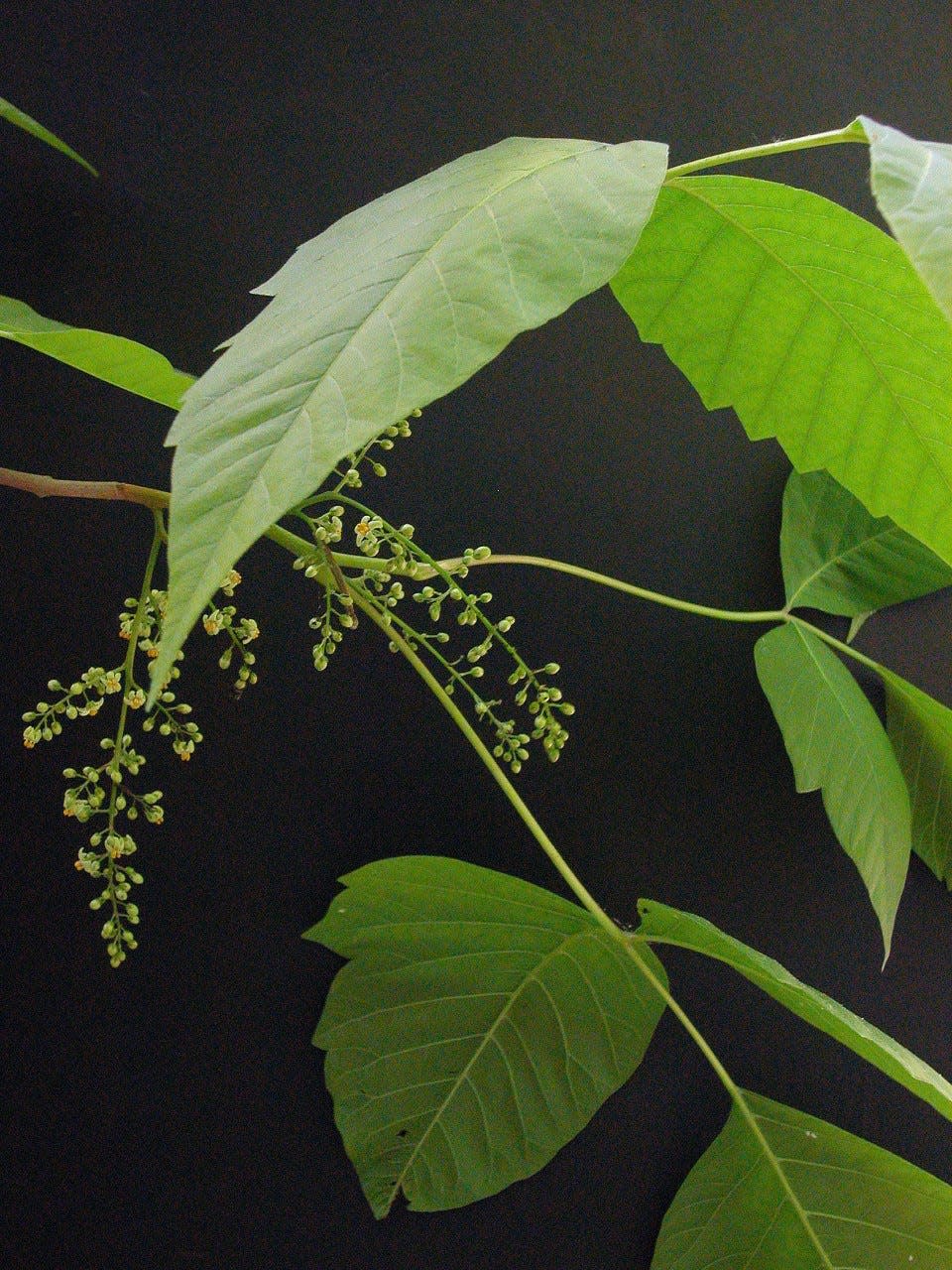Learn to recognize poison ivy and don't become its victim | Mystery Plant

"And this our life exempt from public haunt
Finds tongues in trees, books in the running brooks,
Sermons in stones and good in every thing."
Shakespeare, "As You Like It," Act 2, Scene 1
This is the vine which the Girl Scouts tell us to recognize by its compound, trifoliolate leaves (that is, with three leaflets), and which we are obliged to leave alone, because it can be very problematic.
Depending on one's susceptibility to it, it can indeed cause severe contact dermatitis. Because its foliage is rather unremarkable, it tends to blend in to the background, and sometimes becomes "invisible."
Trap crops: Sunflower power: Plant trap crops to combat pests in the garden
Demonstration garden: A garden treasure: Look what you can learn at Leon County Extension demonstration
Mystery Plant: This weed is happy almost anywhere, including sidewalk cracks | Mystery Plant
You'll frequently hear from a poor victim of this plant, slathered in calamine lotion, insisting that he or she never actually saw the vines that caused the itch. But they must have been there, somewhere!
This plant — poison ivy (Toxicodendron radicans) — is a perfectly good native resident of eastern North America. It is at home in a variety of woodland ecosystems, and it does well in shade. It is common on low ground, abounding in coastal swamps, but may also be found widespread in the mountains.
It is a vine, generally, and if given the chance, will climb high into the canopy. Large vines are commonly seen attached to tree trunks, frequently exhibiting plenty of aerial roots, clinging to the tree's bark.
Somewhere near you: This weed is happy almost anywhere, including sidewalk cracks | Mystery Plant
Seasonal tips: Enjoy the flowers: What to do in the garden in May and June
As a vine, its branches frequently emerge at right angles, more or less, to the main stem. Poison ivy is not always found climbing on trees, and may otherwise, if not climbing, form shrubs, or scramble and run on the ground.
This species is fully capable of growing in less-than woodsy settings, and does quite well as a component of people's backyards (like mine). Potentially serious rashes may result from contact with any part of the plant, and that includes the vines in the winter (when no leaves are showing).
Now, it turns out that not everybody will end up with a rash after fooling around with poison ivy. I am one of them; I am constantly reminded, after spending all this time in the woods and forests, that I don’t seem to be susceptible, as best I can remember, and it is a certainty that I've come in contact with it. Some say that such immunity can wear off. I don't know if that's always true, but I'll keep my fingers crossed.
So here I am, going to bat for this plant. It's certainly not all “bad.” The foliage is actually quite pretty, and a vigorously growing vine in the early summer can be quite impressive.
The plants do produce small, yellow flowers, these eventually forming hard, whitish berries that many birds love to eat. Maybe one of these days the horticulturists will come up with a non-toxic variety suitable for growing in gardens. Who knows? Perhaps there could be garden society dedicated to growing this as a native ornamental.
In the meantime, whether you know you are susceptible to it or not, everyone should take some time to learn how to recognize poison ivy and how to distinguish it from the various other non-toxic species which resemble it. The best way to avoid problems with it is to avoid all contact — whether you are in the woods, or puttering around under the red-tips.
Correction: An earlier version of this story contain one incorrect image.

John Nelson is the retired curator of the A.C. Moore Herbarium at the University of South Carolina in Columbia S.C. As a public service, the Herbarium offers free plant identifications. For more information, visit www.herbarium.org or email johnbnelson@sc.rr.com.
This article originally appeared on Tallahassee Democrat: Mystery Plant: Learn to spot poison ivy so you don't become its victim

